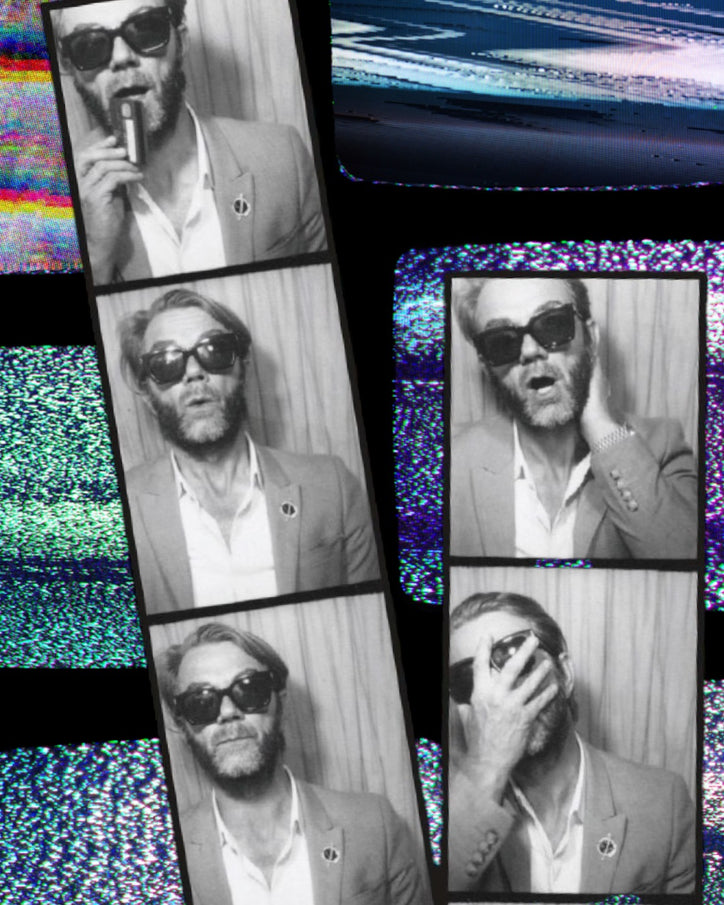


The Shape Shifter: Howard McLaren
Howard McLaren has been the creative director of some of the most influential hair brands of our time. A pioneer of razor cutting, McLaren’s love for individuality and personal style propelled him to the next level.
Howard McLaren was always very curious. Born in Glasgow, Scotland in the 1960s, the third of seven children, he was often found taking apart small appliances around the house and trying (unsuccessfully) to reassemble them. As a young teen, attracted to the militant style and alternative fashion, he became involved in a Glasgow street gang.
When he was 16, the streets became dangerous and he moved in with sister Elsbeth. One day, she returned from a salon visit looking like a completely new woman—McLaren was mesmerized by the transformation. The hairdresser who had performed this transformation invited Elsbeth to a party and McLaren tagged along. “It was like walking into Willy Wonka’s Chocolate Factory: the fashion, hair, style—that was it for me,” McLaren says. “Her haircut changed the direction of my whole life.”
While at the party, he accepted a job from the owner of the salon, where the team focused heavily on precision cuts and hardcore education. But the learning didn’t come easily. “The technicality was fantastic. But I was more interested in the fashion-forward stuff in magazines. I was a great cutter, but didn’t have an eye for customizing the cut for the individual.”
In the early ’80s, McLaren moved to London and took a job with Toni & Guy. While there, he was introduced to editorial photography and how hair translates in a photograph, plus how to collaborate with a team.
Several years later, he moved to Paris deciding he “was ready for French Vogue.” He hired an agent, and started educating to earn money between gigs.
While teaching, a student asked if he could use a razor instead of scissors to mimic the haircut demo. McLaren had doubts but was amazed at the results; he started blending his cuts with the razor and was hooked.
He began collaborating with photographer Dominque Isserman, who was booking big gigs. “During a shoot, she asked me to do a 1940s Veronica Lake look, but I didn’t know who that was.” Rather than firing him, Isserman pulled him and the model aside and showed him a rough idea of what she wanted, and Howard was able to repeat the technique.
McLaren realized to be successful he had to research, and he spent the next few months in bookstores, watching movies and learning his references. “I would test shoot with young photographers every day, practicing roller sets and blow dries. I went mad for it,” he says.
Around this time he met the founder of the thriving New York Bumble and bumble salon, who challenged him to think about what he should do next. “One night, I called him and said I was ready to take over New York.”
He began working with the team, including a young man named Tev Finger, one of Bumble’s earliest employees. “I started cutting with a razor and people bugged out,” McLaren says. “They couldn’t believe it.”
Hairdressers started to experiment with razors, but it was a disaster, McLaren says, because they lacked the technical ability he’d had from his earlier training in London. So, he began to formalize an educational cutting program.
Meanwhile, the editorial opportunities weren’t coming. “There was an elegance in the American market and I was more of a punk rocker,” he says. “I decided to put my energy into the salon.”
McLaren stumbled upon a photograph from the 1920s of women sporting shiny, short, combed-back hair. It was that look, created by Polish hairdresser Antoine De Paris, that inspired the artistic vision of what Bumble would become under McLaren’s creative direction.
“We started developing product and getting press—I was featured in American Vogue with a razor cut and they called it ‘The Next Level of Hairdressing,’” McLaren says. “I started going backstage at shows in New York, Paris and Milan filming teams using the products, and then using that film to help sell product. It shifted the way the industry looked at us and where they went for education.”
When Bumble opened a hairdressing university, McLaren was responsible for developing the curriculum, adding a layer of complexity to his thought-process as he experienced the discipline of writing down his methods.
“When you have to explain something for it to properly function for other people, that translation is quite beautiful,” he says. “It was definitely a shape shifter for me: career three. I finally understood my role in this world would be as an educator.”
The brand thrived and later sold to Estée Lauder. McLaren credits the few years he stayed on under the new leadership with teaching him business skills and corporate communication that took his career to the next level.
After leaving Bumble, he and then-girlfriend, Amanda Wall (who would later become R+Co’s creative director) moved to LA and opened a studio, where he saw clients and Wall managed the casting for their modeling agency.
One day he got a call from Finger (now president of Luxury Brand Partners), who invited him to Miami to discuss the concept of launching R+Co. “I’d worked with Tev since he was 16 and I trusted him. I always felt like my time at Bumble was cut short—I had so many product and education ideas. When Tev explained I’d be collaborating with a Collective—Garren and Thom Priano, who I have so much respect for—I thought, okay this could be next and I got on the plane.”
McLaren and Wall not only got involved in the product formulations and names, it was their artistic approach to the packaging that set R+Co apart from the get-go.
“The world didn’t need another shampoo; the world needed a brand to follow and get behind,” McLaren says. “A brand driven by artists, with incredible ingredients and performance.”
McLaren continues to drive R+Co’s brand identity, artistic vision and product development, collaborating closely with contributors, members of the Collective and the education team.
“R+Co remains a small enough organization that we can shape-shift in a couple weeks, where with other brands it might take a year,” he says. “Every day, I’m thinking about what’s next for this brand, and how we can continue to help hairdressers.”